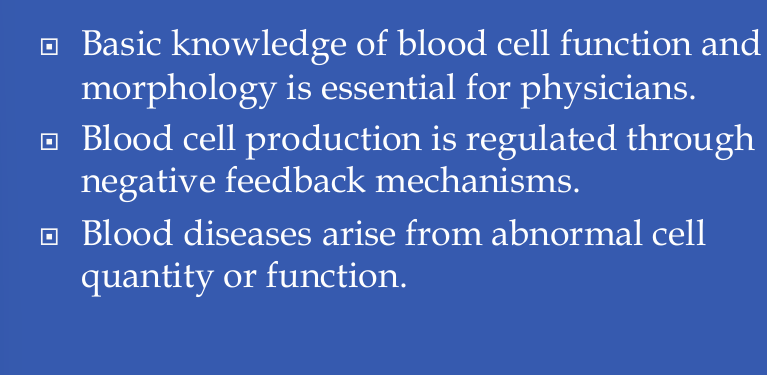Hematopoiesis and Leukocyte Disorders
1/34
There's no tags or description
Looks like no tags are added yet.
Name | Mastery | Learn | Test | Matching | Spaced |
|---|
No study sessions yet.
35 Terms
what is blood?
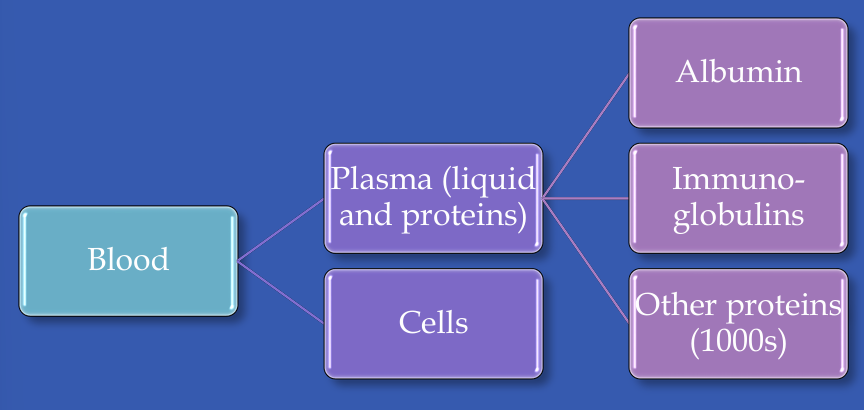
main types of blood cells

hematopoiesis- blood cell production
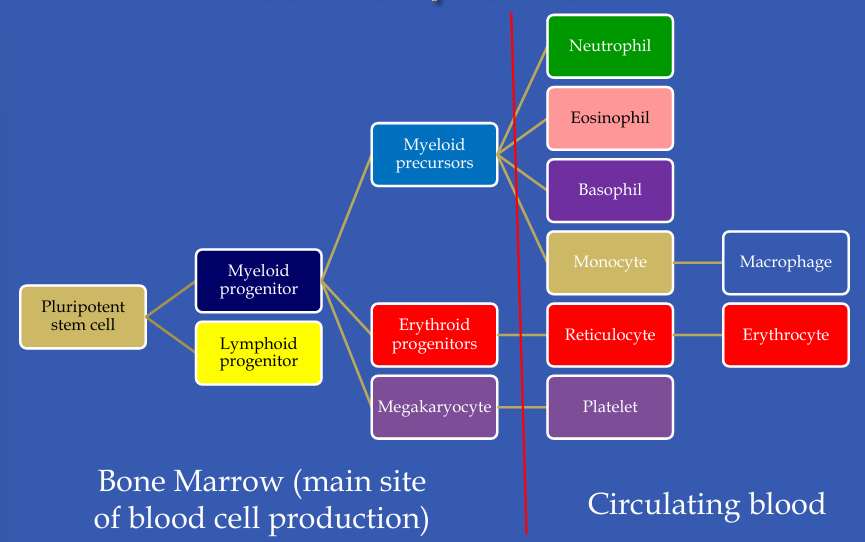
hematopoiesis- bone marrow to circulating blood
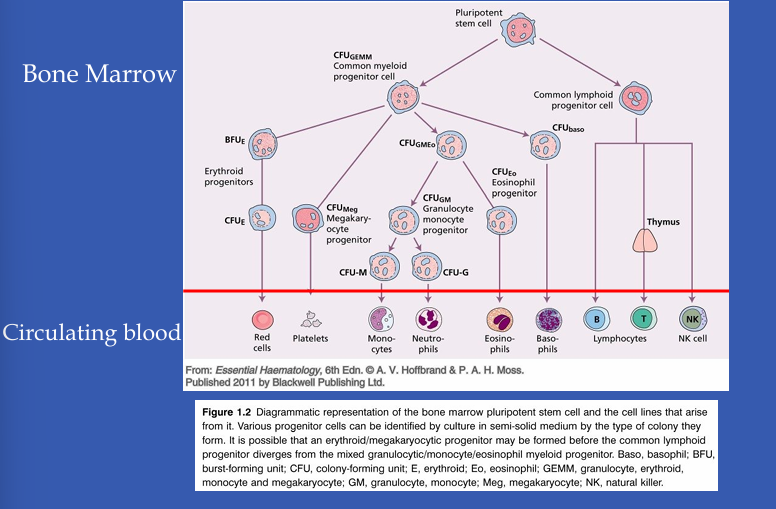
neutrophils
-most numerous leukocytes
-polymorphonuclear or “segmented” cells
-primary defense against infections (“pawns”)
-phagocytes
-kill with toxic oxygen species and toxic proteins
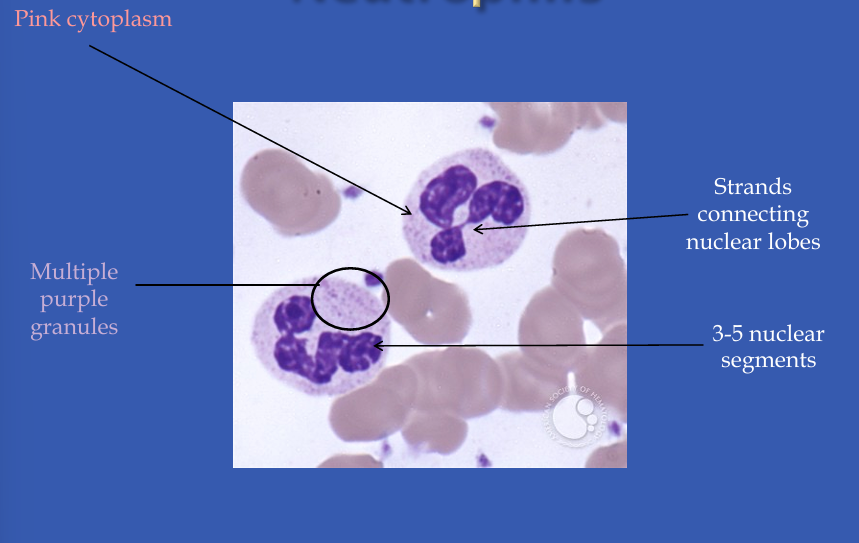
bands
-immature neutrophil form
-present in serious infections
-”bandemia” suggests serious infection
-"U-shaped nucleus”
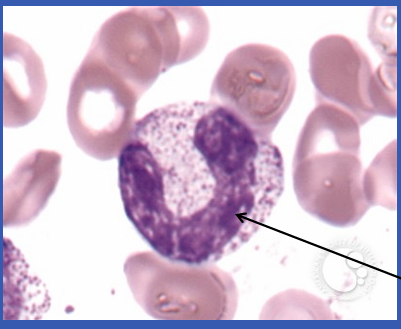
lymphocytes
-second most numerous leukocyte
-pleiform immune functions: antibody production, destroy virus-infected and cancer cells, master coordinators of immune response

lymphocytes
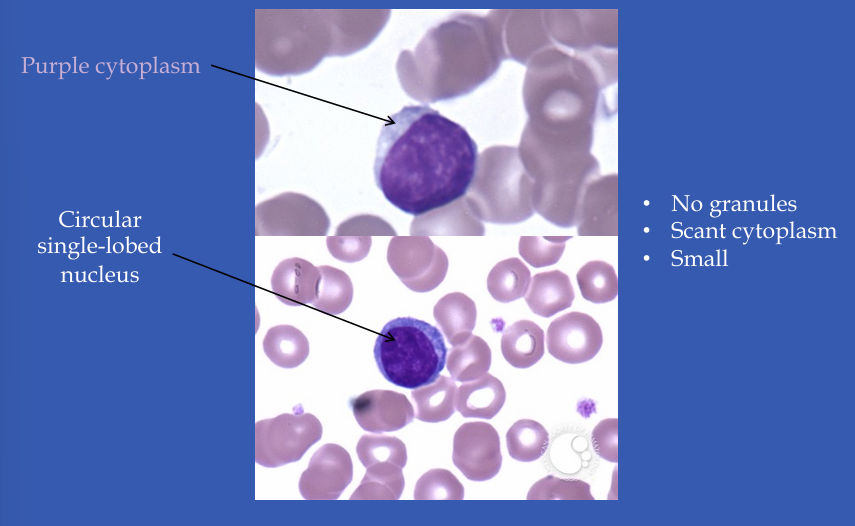
lymphocyte ontogeny
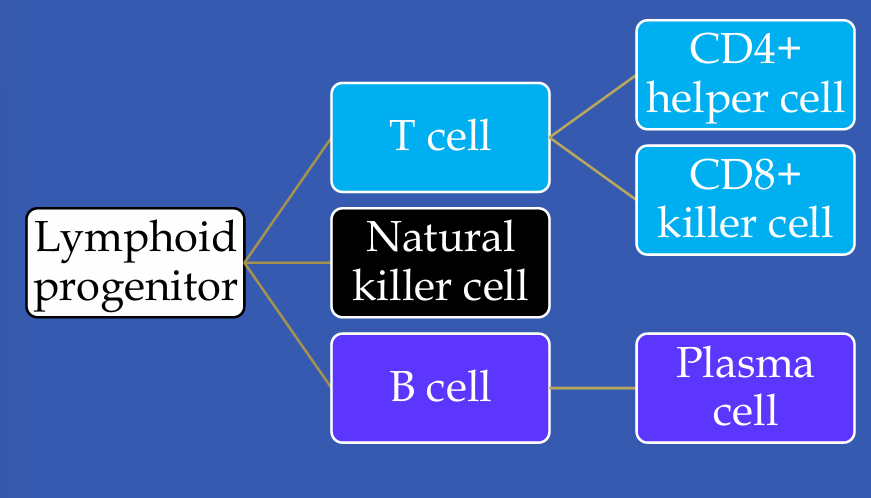
monocytes
-”garbage collectors of the immune system”
-phagocytes that eat: bacteria, senescent cells, tattoos
-antigen presenting cells
-differentiate into macrophages in organs
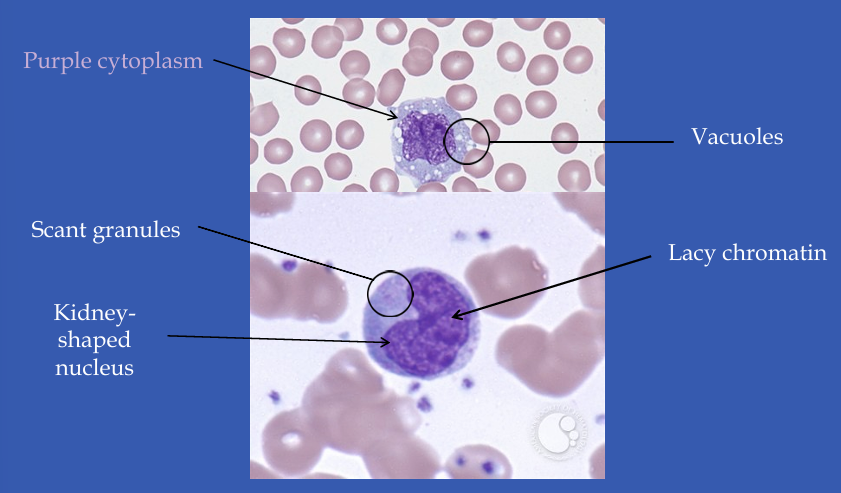
eosinophil
-minor component of blood
-granules filled with vasoactive compounds
-thought to fight parasites
-mediators of allergy
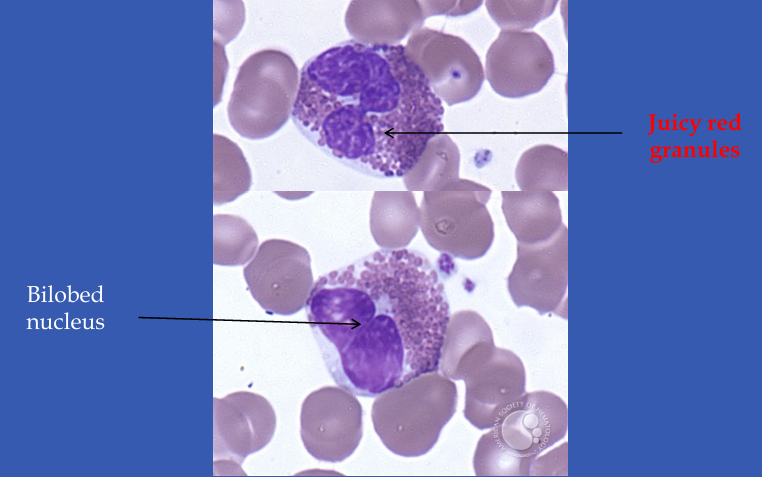
basophils
-least common leukocyte
-granules contain: heparin, histamine
-normal function unclear
-elevated in hematologic cancers, especially chronic myeloid leukemia
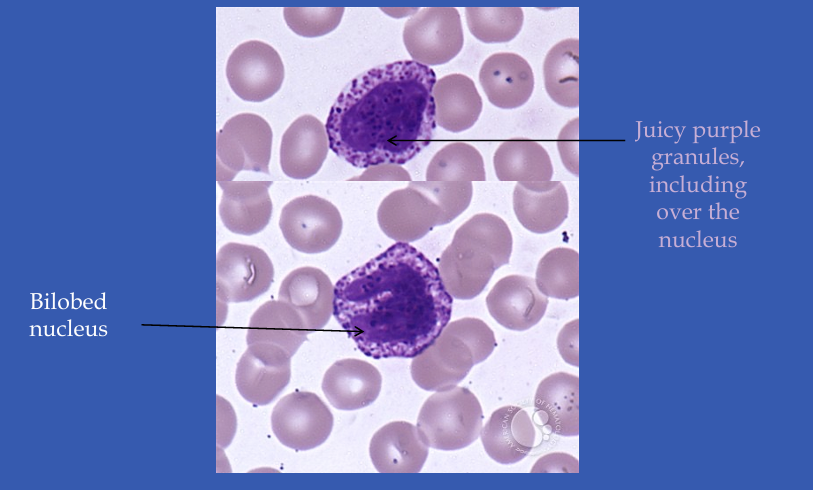
platelets
-anucleate and small
-procoagulant granules
-key components of hemostasis (clotting)
-bind to damaged endothelium via von Willebrand Factor
-production driven by thrombopoietin

thrombopoiesis- platelet production
-megakaryocytes are enormous multinucleated cells in the bone marrow that produce platelets
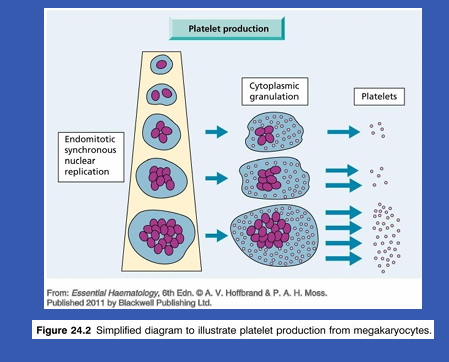
regulation of platelet production
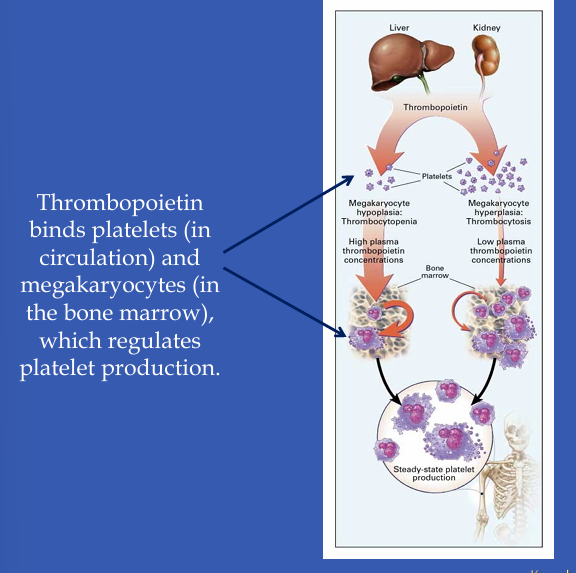
erythrocyte (RBC)/reticulocyte
-anucleate sacks of hemoglobin
-biconcave disc shape essential to function
-lifespan of 120 days
-production driven by erythropoietin
-reticulocytes: newly released erythrocytes, slightly purple (mRNA), comprise ~1% of RBCs, should increase in anemia
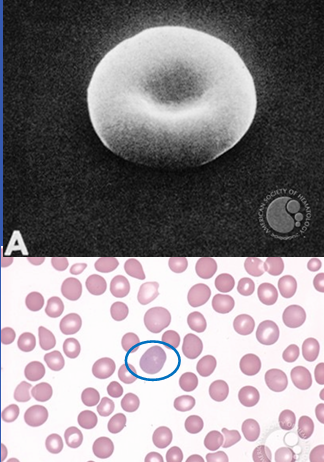
erythropoietin
-regulated erythrocyte production
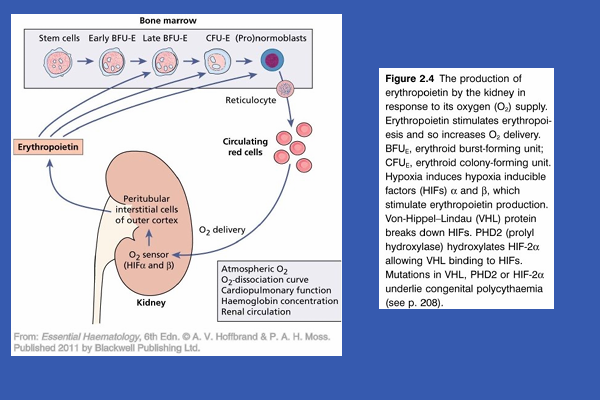
hematocrit
-one method of determining how many RBCs someone has
-ratio of centrifuged RBCs to total blood volume
-measuring blood hemoglobin concentration is more accurate
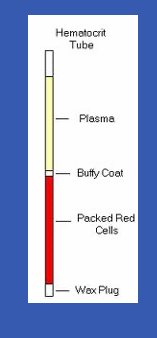
mean corpuscular volume (MCV)
-80-100 = normocytic
-<80 = microcytic
->100 = macrocytic
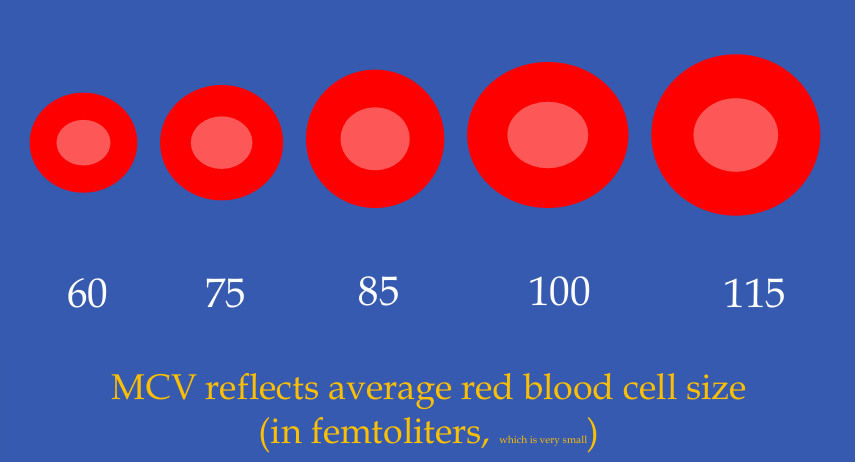
erythrocyte cell membrane and cytoskeleton
-contain many proteins essential to its biconcave disc function
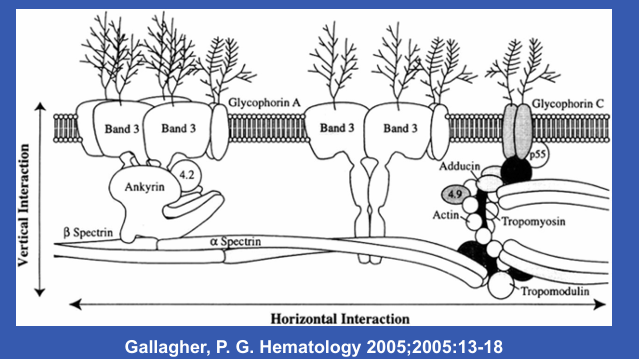
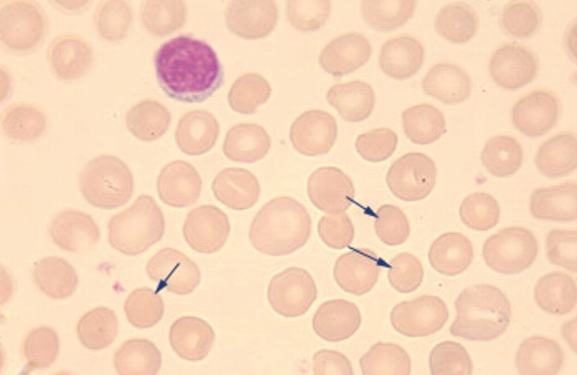
-hereditary spherocytosis
-abnormal cytoskeleton function can cause anemia
-picture actually hereditary elliptocytosis
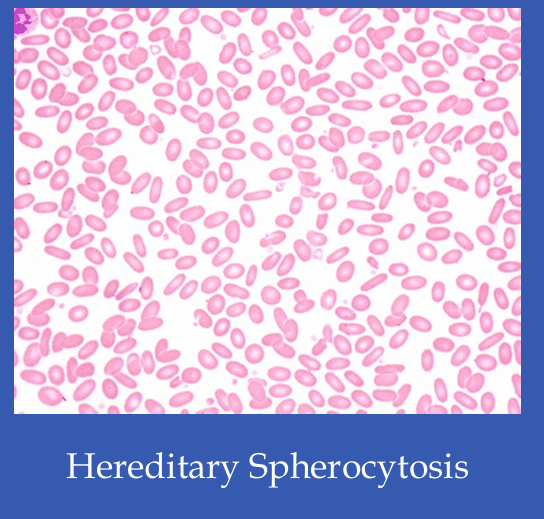
pathophysiology of spherocytosis/elliptocytosis
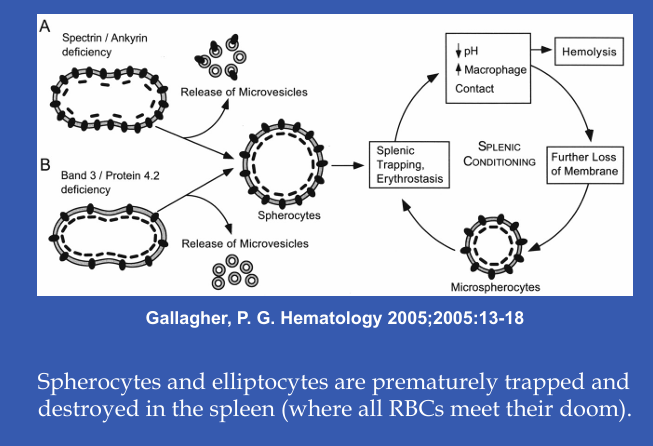
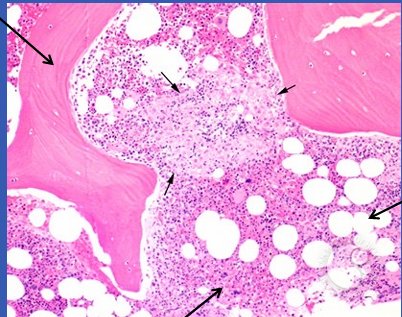
-bone marrow
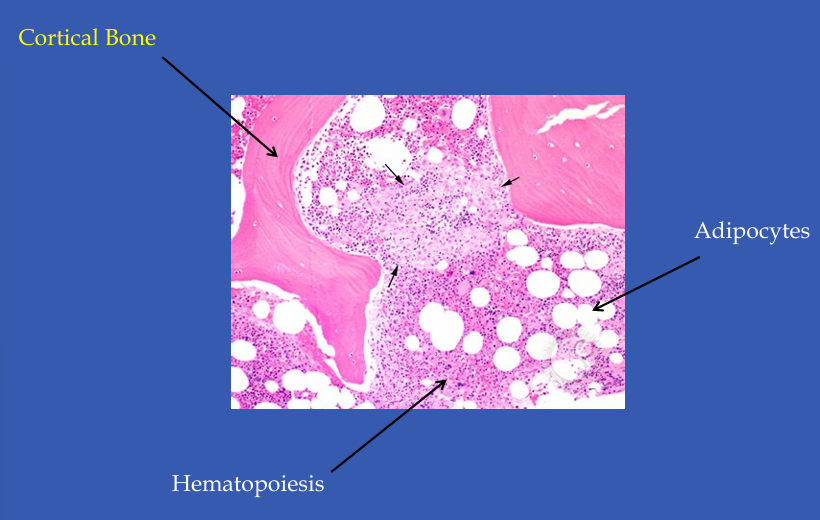
myelopoiesis- WBC production

erythropoiesis- RBC production
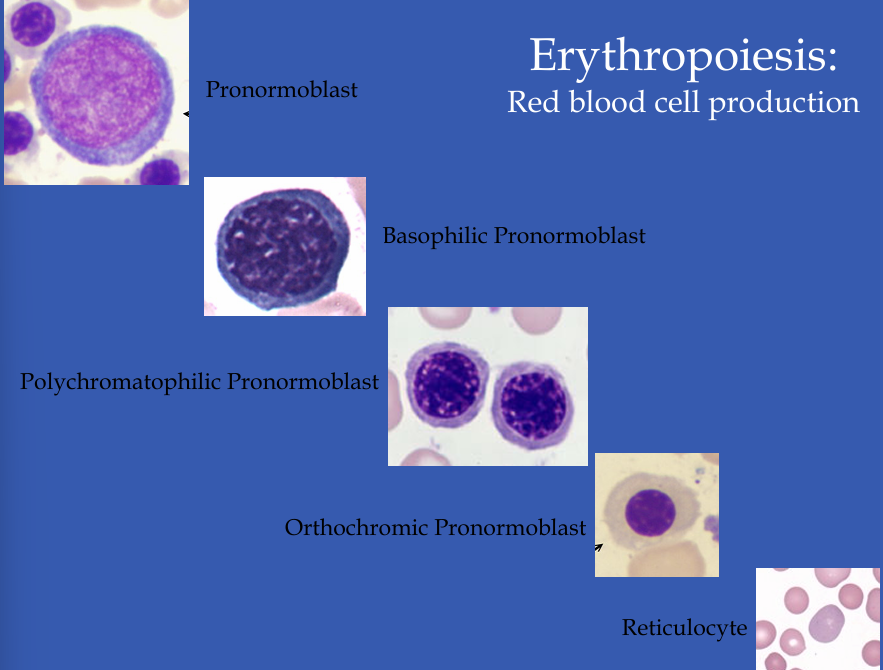
complete blood count (CBC)
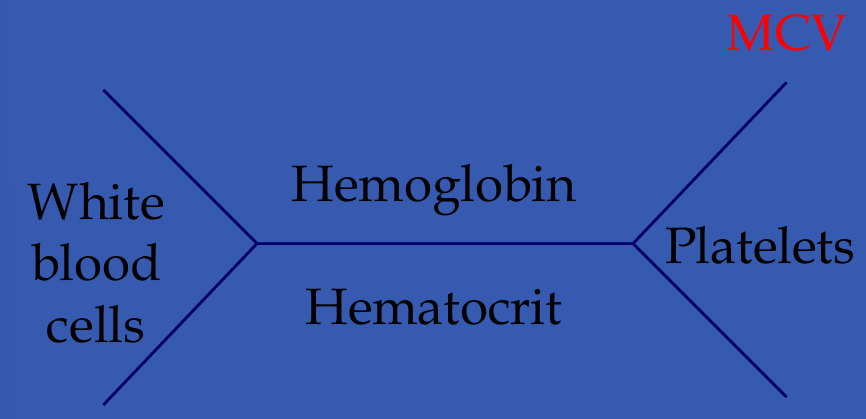
leukocyte differential
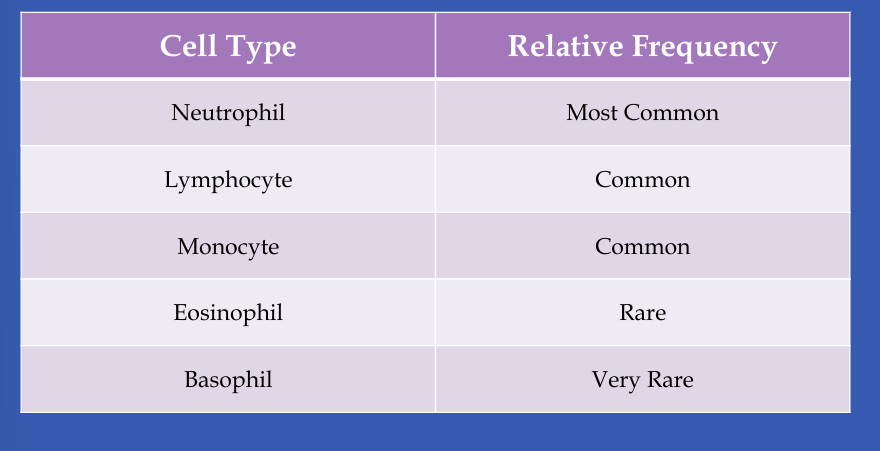
leukopenia
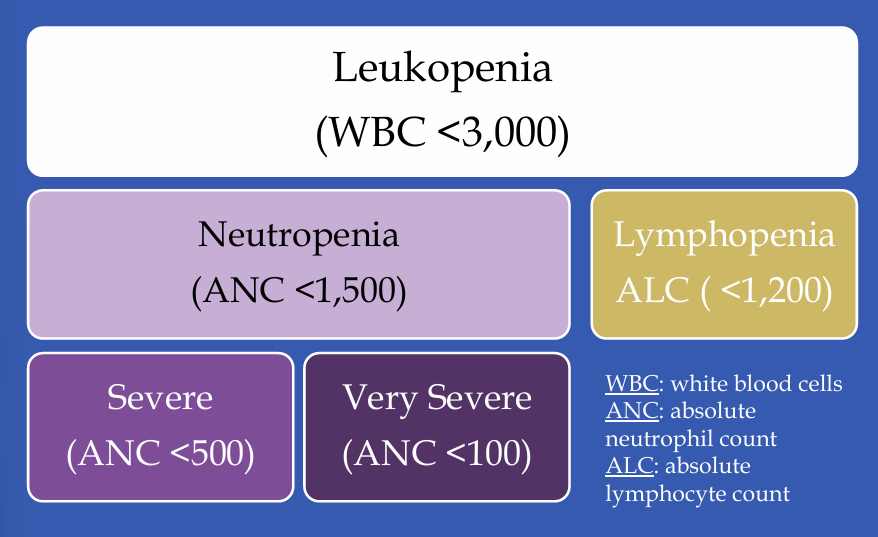
causes of neutropenia
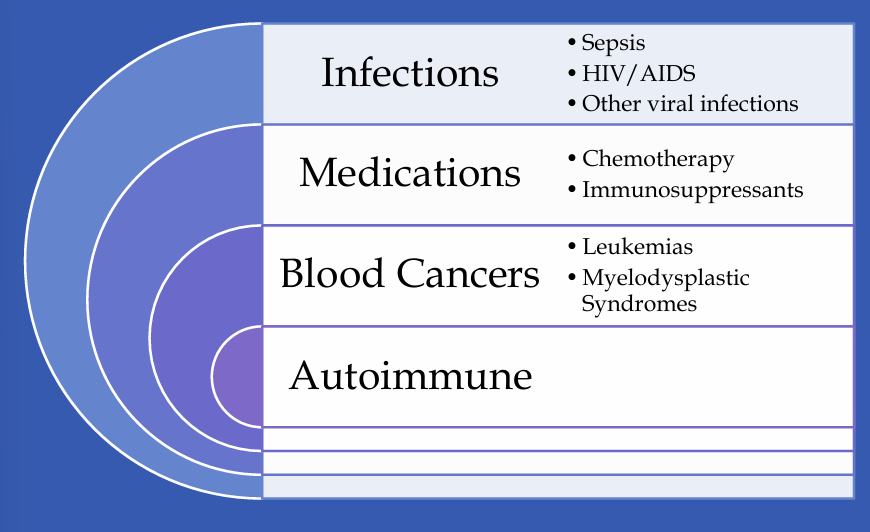
duffy associated neutrophil count
-formerly called “benign ethnic neutropenia”
-inherited absence of Duffy protein on blood cells: protects against endemic malaria in west Africa, causes spurious neutropenia
-major source of endemic racism in hematology: unnecessary hematology referrals and testing, delayed surgeries, exclusion from cancer clinical trials, unnecessary chemotherapy dose reductions
causes of lymphopenia
-HIV/AIDS: hypergammaglobulinemia, lymphocyte count determines AIDS-defining illness risk
-medications: corticosteroids, immunosuppressives and chemotherapy
-viral infections: EBV, CMV
causes of neutrophilia
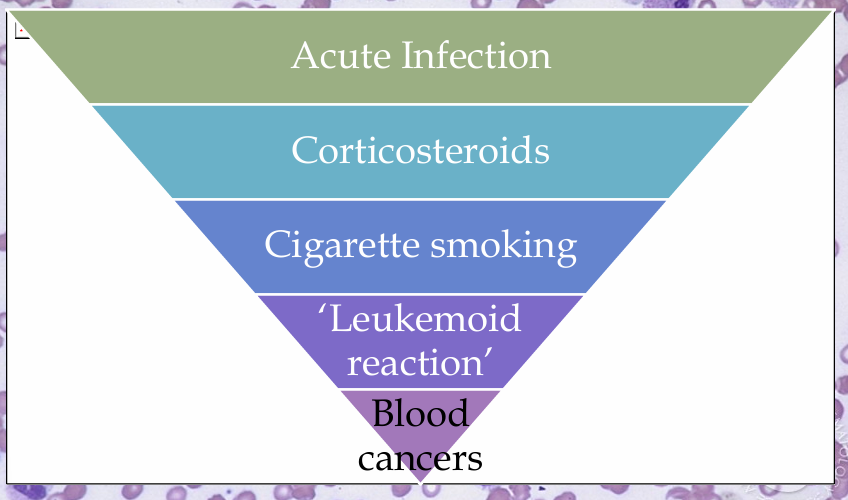
eosinophilia
-neoplasia
-allergy
-addison’s disease
-collagen-vascular disease
-parasite infection
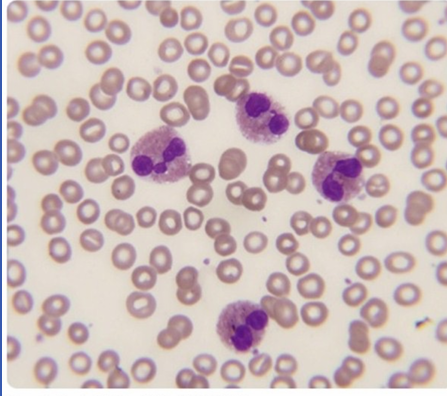
rare inherited leukocyte disorders (almost never see these)
-lazy leukocyte syndrome
-cyclic neutropenia
-Chediak-Higashi syndrome
-chronic granulomatous disease
-Bruton’s agammaglobulinamia
-severe combined immunodeficiencies
summary
